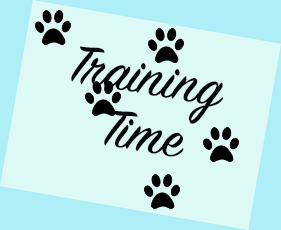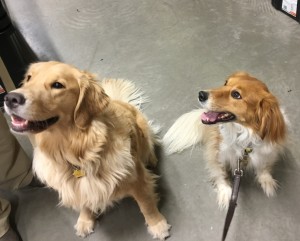Category: Commands
The Importance of Basic Commands
Basic skills build a foundation for communicating with and verbally managing your dog around your baby.
In Please Don’t Bite the Baby, I write about how basic dog training commands are like standard staple ingredients that go into complicated recipes and meals.
Individually they are nice, but when put together they make something marvelous.
Basic skills build a foundation for communicating with and verbally managing your dog around your baby.
All-done –
- teaches your dog that the game or activity is over and there will be rewards for the first several weeks when- ever you say “all done.”
Come –
- should be paid for exceedingly well for the first six months. Jackpot your dog when he gets to you, and when fading rewards, only reduced to intermittent rewards. Your dog should get a reward for come every now and then, forever.
Down –
- your dog’s whole body is lying down; butt, hips, and elbows are touching floor.
Drop-it (some use give) –
- your dog should drop items from their mouth on command. This should be one of the greatest games you ever play with your dog so she loves to give up things.
Go-say-hello –
- your dog will move forward to greet a person without jumping.
Go-sniff –
- you can direct your dog away from anything, or anyone including your baby with a simple hand gesture.
Leave-it –
- your dog should not go toward, sniff, pick up, or bark at an object that you indicate. In short “don’t even think about it.”
Off –
- your dog should get off of the counter, couch, you, your guests, or anything he is on. Do not use down. While human language works having one word mean different things in different contexts, dogs need each command to have one meaning.
Settle –
- your dog should relax on cue in a spot where you indicate. See details above.
Sit –
- your dog’s butt is on the floor. Don’t repeat your command. Sit is the most often repeated command. This repetition teaches your dog to sit on three or four commands, to ignore the command, or just cranks their energy up.
Stand –
- your dog is standing still on all four feet. This command allows us to wipe paws, do tick checks, and make sure our dog doesn’t think sit is just the beginning of down by allowing us to use stand between a sit and a down.
Stay–
- your dog is essentially frozen in place—like they are at military attention until you release them with the all-done command.
Wait –
- is the equivalent of “hang on a second.” Your dog should literally pause for two to thirty seconds—it is a short break in your dog’s activity.
In Please Don’t Bite the Baby, and Please Don’t Chase the Dogs, I outline how to train each of these and when they are best applied to ensuring the safety of both baby and dog.
By using placement skills that essentially mean: come here, go there, don’t move, chill for awhile, greet politely, and others, we can control our dog’s behavior and help our dog understand what is expected in different situations.

